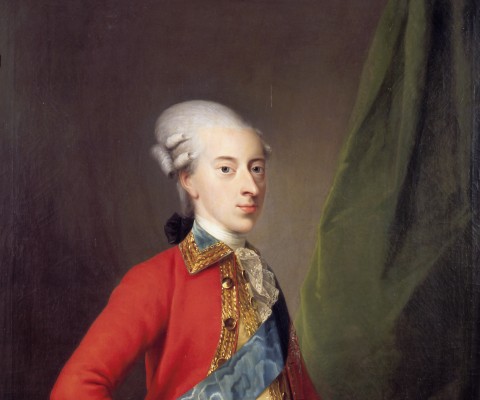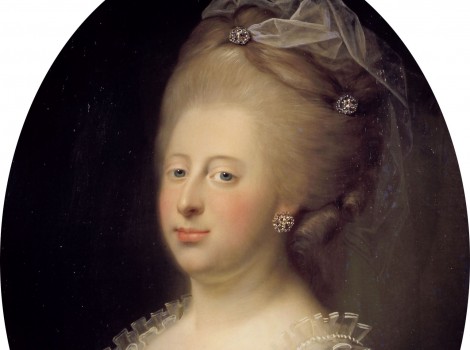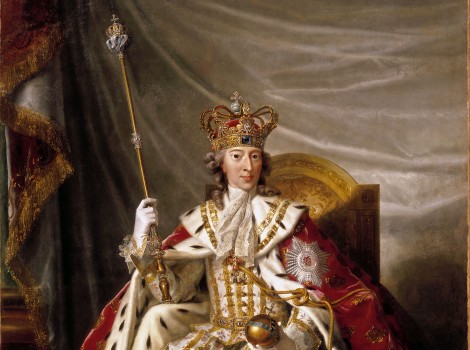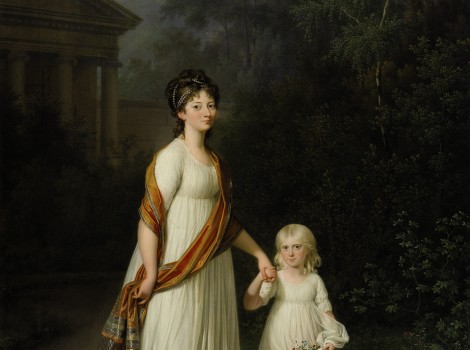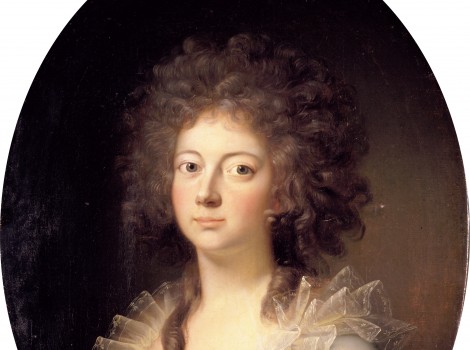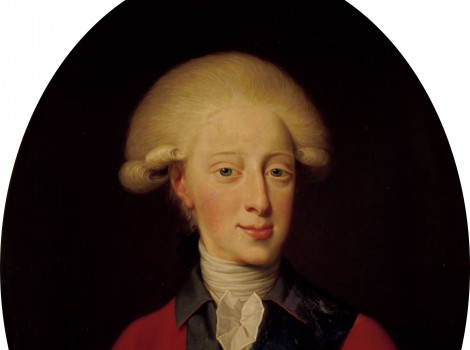Christian VII
Christian VII, wearing a powdered wig with three puffs and a black ribbon at the neck, observes the viewer in this portrait painted by Jens Juel. The King’s left hand rests on a table, on which a black hat is also placed. He wears a red jacket and a yellow waistcoat with a gold ribbon, and is furthermore decorated with the Order of the Elephant as well as rapier at his side.
Placing the king in naturalistic surroundings was typical of Jens Juel’s style, the inspiration for which he had found during a stay in Switzerland. The idea was that the person portrayed should be painted in his or her usual surroundings, and not among lofty clouds, as was characteristic of the rococo.

 Dansk
Dansk
 English
English
 Deutsch
Deutsch

